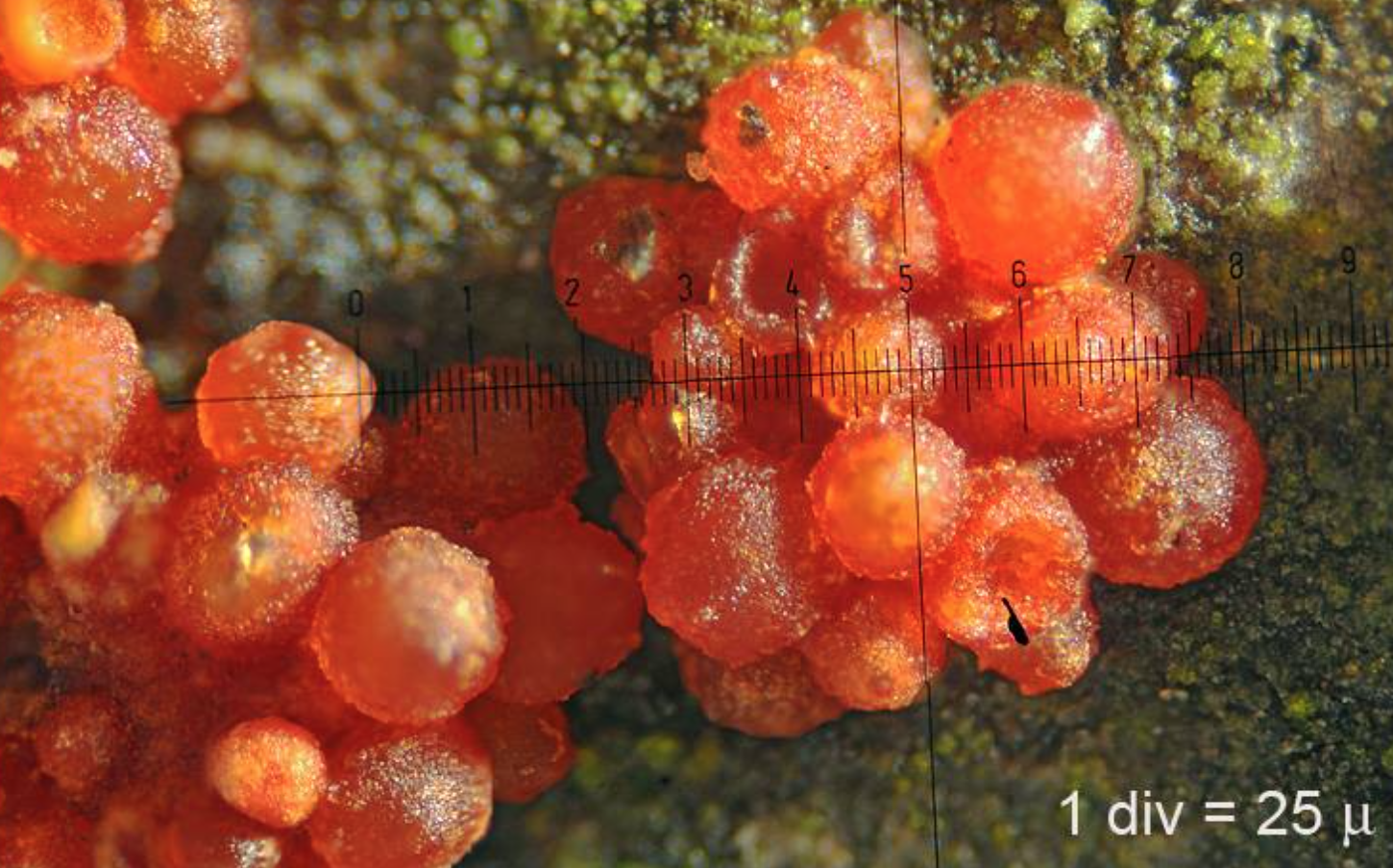
We’re familiar with Coral Spot on fallen beech branches and occasionally standing wood – see our original post here and the photo below – but we never associated it with these Nectria cinnabarina raspberries. We shouldn’t be too hard on ourselves. The two forms often don’t appear together and most books and many websites seem to show one or the other. Everyone thought it was two species until 1828 and many people still seem confused. You can see why. The First Nature profile says that before Nectria cinnabarina was fully understood, the Coral Spot structures were described as another species; Tubercularia vulgaris.
There are several other reddish Nectria species and they are difficult to separate without a microscope but it certainly looks like N. cinnabaria, which is the commonest species (actually a complex of similar species according to DNA analysis). Have a look at the FirstNature profile here and this particularly nice Mykoweb picture, and see what you think. Sorry our heavily cropped photo isn’t sharper; we didn’t realise the significance of the raspberries and only had a phone with us.

Technical Stuff
Sorry, it gets a bit technical from now on because we wanted to try and remember the explanation of how all this works – feel free to stop here if you want though!
It turns out that the paler, light pink or faint orange coral spot structures are the asexual form, while the raspberry fruiting bodies represent its sexual form. Both produce spores but the asexual fruiting bodies can be generated quickly and easily, so maybe they help the fungus occupy the area quickly and choke out competitors. All very complicated but the drawings at the bottom of this post give the general idea (A=sexual, B=asexual) and there is a nice simple explanation of this type of fungal life cycle here.
The profile says it is weakly parasitic (i.e. on living wood) – especially on weakened trees – and then saprobic (ie.on rotting wood) on twigs of Beech and occasionally other deciduous hardwoods. It goes on to explain: the effect of Coral Spot infection (on living wood) is that (usually small) twigs and branches die back and the dense clusters of soft, pinhead-sized pink fungal sexual stage blobs break through the thin bark. Later the blobs harden and turn dark reddish-brown but by this time the infected timber is so weak that it tends to snap off during windy weather.
We’ll keep our eyes open and try and get a better shot but meanwhile the photo below from forestfloornarrative.com shows clearly that its one of the flask fungi.



One thought on “Cinnabarina / Raspberry Phase?”